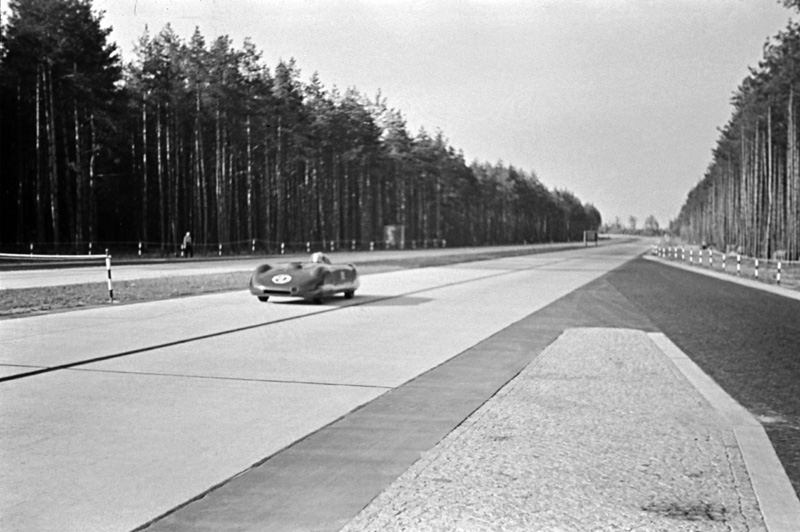The Triple M series of MG’s all belong to a family of models that commenced with the 1929 MG Midget and continued through to the mid-thirties via a long string of four and six cylinder OHC engined cars that forged the marques identity.

|
This scan from a newly discovered Motor magazine 35 mm negative shows MG Midget EX135 at speed on an autobahn near Dessau, Germany, where in May 1939 the car broke a series of records. Below, can be found the National Archives potted biography of the driver, which tells of an exciting life both in the motoring record breaking realm and also away from it. Alfred Thomas Goldie Gardner was born on May 31st 1890 in Essex, his mother’s maiden name being Goldie. His early motoring interest lay in motorcycles but the First World War interrupted his ambition to race them, and on the outbreak he joined the army, becoming the youngest Major in the British Forces. In 1917 his reconnaissance plane was brought down by enemy fire and he sustained leg and hip injuries that were to hospitalise him for two years and leave him disabled for the rest of his life. In this condition he began motor racing in 1924 and in 1930 he came to the attention of Cecil Kimber the managing director of M.G. and subsequently raced various of these cars with considerable success. In 1934 he bought a streamlined K3 Magnette and after accompanying Sir Malcolm Campbell to Daytona Beach to set a new Land Speed Record, his appetite was whetted for record-breaking, starting with a class record at Brooklands. In 1937 he went to Dessau in Germany where he created a new Flying Mile Record at 148.5mph.. He went on to set further records at Montlhery in France and returned to Germany later in the year to set new records. He now had in mind achieving 200mph for which purpose George Eyston’s Magic Magnette Ex 135 was acquired and modified to produce 196bhp. In November 1938 he returned to Germany and raised the record to 186mph. With the 200mph target still eluding him, in May 1939 he returned yet again to take the 1100cc record to 203mph, and with the engine rebored overnight he also took three 1500cc Class ‘F’ records. Further attempts at the 750cc records were stymied by the outbreak of war, and he first of all joined with Sir Malcolm Campbell in setting up the Mobile Special Constabulary (The Blue Birds) and then helped reorganise civilian transport in liberated Europe. Once the war had ended new Class ‘H’ (750cc) records were achieved in Italy and at Jabbeke, Belgium and then in 1947 Class ‘I’ (500cc) records were set, and in 1948 a Jaguar 2-litre experimental engine was borrowed to set Class ‘E’ (2000cc) records. This allowed him to claim records in 50% of the World International Classes. Further record-breaking continued at Jabbeke and in the USA through 1950-2 but in 1952 he suffered a cerebral haemorrhage and was forced to retire. He was holder of the OBE and received three BRDG Gold Stars. He died in 1958. Photo courtesy of Motorsport Images |
